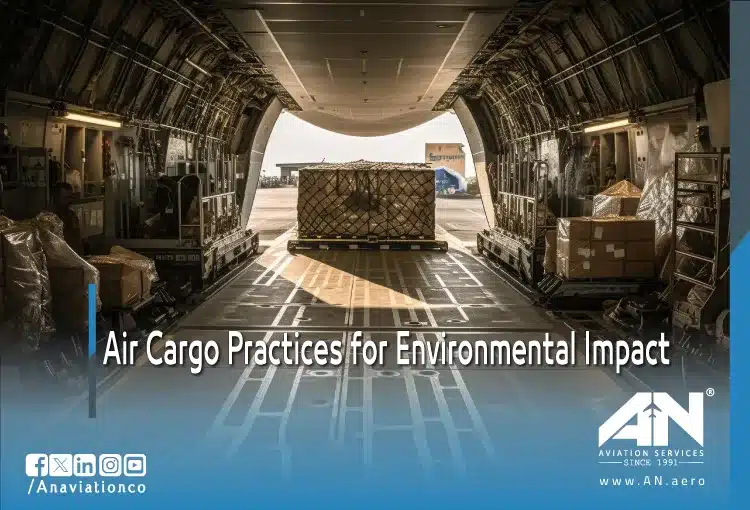
As the world becomes increasingly interconnected, air cargo has become the backbone of global trade, enabling the swift transportation of goods across continents. However, this growth comes with a significant environmental footprint. The industry, now more than ever, faces the challenge of balancing operational efficiency with environmental responsibility. By adopting sustainable air cargo practices, the industry aims to mitigate its impact while maintaining the reliability and speed it’s known for.
This post delves into the transformative air cargo practices reshaping the environmental landscape of global trade, focusing on the integration of technology, efficient operations, and a more eco-conscious supply chain.
The Role of Air Cargo in Global Trade
Air cargo is indispensable for transporting goods quickly and efficiently, especially for high-value or time-sensitive shipments like medical supplies, fresh produce, and technology products. It contributes to nearly 35% of global trade value, even though it accounts for less than 1% of total cargo by weight.
While air cargo’s speed and reach are unparalleled, its reliance on aviation, which generates greenhouse gas emissions, raises critical environmental concerns. Addressing these challenges requires a comprehensive shift toward more eco-friendly practices across the supply chain.
Air Cargo Practices for Reducing Environmental Impact
1. Electronic Air Waybill (e-AWB): A Paperless Revolution:
One of the most impactful steps in air cargo sustainability is the adoption of the electronic air waybill (e-AWB). Traditionally, air cargo involved an excessive amount of paper documentation, often amounting to hundreds of pages per shipment.
The e-AWB eliminates this reliance on paper, replacing it with digital records. Not only does this reduce waste, but it also improves efficiency by enabling real-time tracking and quicker processing. Strong relationships between carriers, freight forwarders, and regulatory authorities have been key to driving e-AWB adoption globally.
2. Efficient Cargo Handling and Loading Techniques:
Efficient cargo handling isn’t just about speed; it’s also about minimizing wasted resources. Streamlined loading procedures and the use of lightweight, modular cargo containers reduce fuel consumption during transport.
Airlines are also employing better cargo handling systems that optimize space within the aircraft. By utilizing every available inch, they can reduce the number of flights needed to transport goods, effectively cutting emissions.
3. Sustainable Air Transport Operations:
Many air cargo operators are transitioning to more sustainable aviation fuels (SAF), which can reduce carbon emissions by up to 80% compared to traditional jet fuel. These fuels, derived from renewable sources like waste oils or algae, are a key focus for the future of air transport.
Additionally, many air freight companies are modernizing their fleets to include fuel-efficient aircraft, significantly reducing the carbon footprint of transporting goods by air.
4. Real-Time Tracking for Operational Efficiency:
Real-time tracking technology has revolutionized air cargo logistics, offering a clearer picture of shipments’ status and location. This not only improves customer satisfaction but also reduces inefficiencies that lead to wasted resources, such as unnecessary transportation or idling vehicles at cargo hubs.
The ability to monitor and adjust routes dynamically ensures that goods are transported along the most fuel-efficient paths, further minimizing emissions.
5. Collaboration in the Air Cargo Supply Chain:
Collaboration is essential for reducing the environmental impact of air cargo. International air transport organizations, like the International Air Transport Association (IATA), have spearheaded efforts to standardize sustainable practices across the industry.
Strong relationships among carriers, shippers, and logistics providers foster innovative solutions, such as combining shipments to reduce the number of flights or improving handling practices to ensure that goods are transported safely and efficiently.
Challenges and Opportunities in Sustainable Air Cargo
While progress is being made, implementing sustainable air cargo practices is not without challenges. The transition to SAF, for example, is hindered by high production costs and limited availability. Similarly, upgrading fleets with fuel-efficient aircraft involves significant investment.
However, these challenges present opportunities for innovation. By investing in research and development, the air cargo industry can explore breakthroughs in fuel technology, aircraft design, and digitalization, all of which contribute to sustainability goals.
The Future of Air Cargo Sustainability
The air cargo industry stands at a crossroads. With mounting pressure to reduce its environmental impact, operators must embrace sustainable practices to ensure long-term viability. This includes further integration of digital technology, investment in renewable energy sources, and collaboration across the supply chain.
Through these efforts, the air cargo industry can maintain its critical role in global trade while safeguarding the planet for future generations.
Conclusion
The environmental impact of air cargo is undeniable, but so is its potential to adapt and evolve. By adopting innovative practices such as e-AWBs, efficient cargo handling, and sustainable fuel use, the industry is taking meaningful steps toward a greener future.
For global trade to thrive in an eco-conscious world, air cargo must continue to lead with bold initiatives and sustainable solutions, proving that progress and environmental responsibility can go hand in hand.

